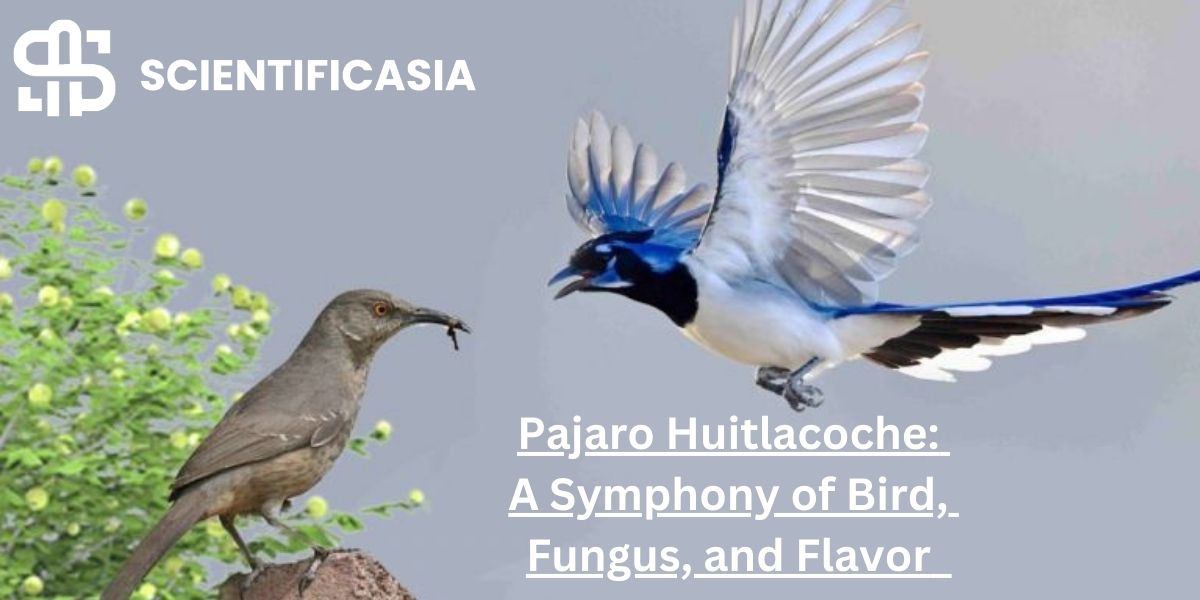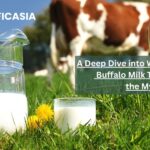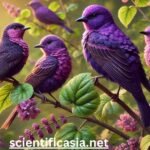“Pajaro Huitlacoche” is a lively song that has an unexpected dissonance that dances on the tongue. Some associate it with visions of a songbird with feathers soaring across the skies of Mexico. Some associate it with the earthy scent of a gastronomic treat buried inside corncobs. Both explanations are accurate in the end and tell a fascinating tale of a fungus, a bird, and their unexpected relationship.
The Bird:
The curve-billed thrasher, or real Pajaro Huitlacoche (Toxostoma curvirostre), is a songbird that is indigenous to Mexico and Central America. Its remarkable vocal abilities make up for its unremarkable appearance. This adept mimic is a good impersonator in the world of birds since it can duplicate the cries of other birds. It regulates insect populations and disperses seeds, both of which are crucial functions in its ecology.
The Feathered Maestro: The Thrasher with Curved Bill
The curve-billed thrasher (Toxostoma curvirostre), another name for our bird, the “Pajaro Huitlacoche,” is a virtuoso of melody. With its dull brown coat, this unsung hero is not as colorful as its cousins in the tropics. But its voice is what really makes it beautiful.
Imagine a virtuoso orchestrating the sounds of nature. The curve-billed thrasher mimics with amazing accuracy, creating a mesmerizing chorus out of mockingbird, hawk, and even wren cries. It is a veritable bird prodigy because of its extensive repertoire, which includes more than 100 recorded imitations.
But this is more than a showpiece talent. The thrasher mimics to draw potential mates, protect its area, and perhaps trick prey. Its melodious tapestry fills the air as it jumps across scrublands and cornfields, demonstrating its ecological significance.
Huitlacoche, the Devil’s Corn, is the Black Gold.
Under the earth, a quiet drama is playing out while the thrasher chants its praises. A malicious being known as Ustilago maydis takes control of corncobs and transforms them into a black mass. Once dreaded as the “Devil’s Corn,” this parasitic fungus shows its real nature upon closer examination.
In Mexico, it’s known affectionately as “Huitlacoche Pajaro,” and it’s not a pest but rather a hidden gem. Its deep, truffle-like look conceals a nuanced flavor profile that is earthy, smoky, and slightly mushroomy and corny. Indigenous people in Mexico have been using this gift from the soil for millennia, adding it to their traditional cuisine.
The Intriguing Link: A Mutually Beneficial Dance
When we learn that the bird and the fungus are enmeshed in a complex dance, the narrative takes an amazing turn. The thrasher unintentionally becomes a carrier of the huitlacoche spores, dispersing them to new areas as it feeds on diseased corncobs. Both parties gain from this seemingly parasitic relationship. The spore-filled kernels provide the thrasher with an abundant supply of nutrients, while the fungus expands its spread and ensures its survival.
This waltz demonstrates the delicate balance of nature in a symbiotic manner. The thrasher not only reaps the benefits of the abundance but also helps to preserve the huitlacoche, improving the soil for subsequent corn crops.
Huitlacoche’s Cultural Significance: Looking Past the Plate
Huitlacoche Bird is more than just delicious food. Its appearance in pre-Hispanic art and its allusion to antiquity Nahuatl literature serve as evidence of its deep ties to Mexican culture. It stands for tenacity, resourcefulness, and the capacity to derive value from the unexpected.
Huitlacoche is experiencing a revival now, not just in Mexico but all across the world. Chefs are experimenting with its adaptability, adding it to tacos, soups, quesadillas, and even fine dining dishes. Palates are continually surprised and delighted by the richness and complexity that its distinct flavor profile adds.
Conservation Issues: Preserving Taste and Harmony
As huitlacoche becomes more and more popular, the demand for sustainable methods also increases. The delicate balance between the fungus and the bird might be upset by overharvesting diseased corncobs. Furthermore, the thrasher is endangered due to habitat loss, which could affect “Devil’s Corn” in the future.
We can guarantee the thrasher’s melody and the earthy symphony of flavors provided by Animal Huitlacoche by encouraging ethical farming methods and fighting for habitat conservation.
Past the Name:
The fungus and the bird both symbolize distinctive facets of Mexican biodiversity and culture. The huitlacoche gives a distinctive flavor to culinary preparations, and the curve-billed thrasher fills the air with its melodic melodies.
Conclusion: An Honoring of Connection
There is more to the legend of the “Pajaro Huitlacoche” than just a bird and a fungus. It serves as a reminder of the complex network of existence, in which seemingly unrelated things come together to form a symphony of biodiversity and cultural value. It’s an appeal to be mindful of the unanticipated, to acknowledge the tenacity of the natural world, and to take good care of this priceless ecological dance.
Thus, keep in mind the origin of these names the next time you enjoy the smoky richness of Huitlacoche Animal or hear the song of the thrasher. Let it be a tune that stays, serving as a constant reminder of how intertwined everything is in our world and how crucial it is to preserve its variety of harmonies.












